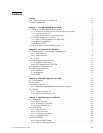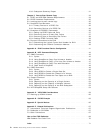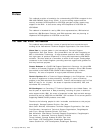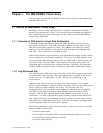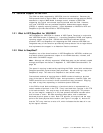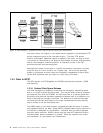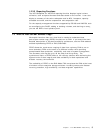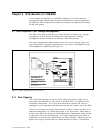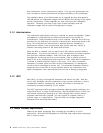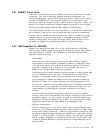
1.2 VSE/ESA Support for the RVA
The RVA has been supported by VSE/ESA since its introduction. Because the
RVA presents itself as logical 3380 or 3390 direct access storage devices (DASD)
attached to a logical 3990 Model 3 storage control, releases of VSE/ESA
supporting this logical environment have functioned with the RVA. However,
until now, VSE/ESA has not provided SnapShot, deleted data space release
(DDSR) or capacity reporting natively. It has depended on VM/ESA′s IXFP and
SnapShot to provide that benefit to VSE/ESA guests.
1.2.1 What Is IXFP/SnapShot for VSE/ESA?
IXFP/SnapShot for VSE/ESA is a feature of VSE Central Functions in conjunction
with VSE/ESA Version 2, Release 3.1. It provides SnapShot, DDSR, and capacity
reporting support for the RVA. OS/390 and VM/ESA provide two distinct
products—IXFP and SnapShot—for supporting the RVA, whereas VSE/ESA has
integrated many of the functions provided by these products into a single feature
that implements the support in an Attention Routine command.
1.2.2 What Is SnapShot?
SnapShot, one of the three functions in IXFP/SnapShot for VSE/ESA, enables you
to produce almost instantaneous copies of non-VSAM data sets, volumes, and
data within CYLINDER ranges.
Note: Although not officially supported, VSAM data sets can be indirectly copied
through techniques we discuss in Appendix C, “VSE/VSAM Considerations” on
page 59.
The speed in copying is attained by exploiting the RVA′s virtual disk architecture.
Snapshot produces copies without data movement. We call making a copy with
SnapShot a
snap
. The result of a SnapShot is also called a
snap
.
Conventional methods of copying data on DASD consist of making a physical
copy of the data on either DASD or tape. Host processors, channels, tape, and
DASD controllers are involved in these conventional copy processes. Copying
may take a long time, depending on available system resources.
In the RVA′s virtual disk architecture, a functional device is represented by a
certain number of pointers in the FTD. Every used track has a pointer in the FTD
to its back-end data. You
snap
a copy of the data by copying its FTD pointers.
As you can imagine, snapping is a very fast process that takes seconds rather
than minutes or hours. No data movement takes place, and no additional
back-end physical space is used. Both FTD pointers, the original and the copy,
point to the same physical data location (see Figure 2 on page 4). Notice too
that the TNT entry now has a value of 2, which indicates that the data is in use
by two logical volumes.
Chapter 1. The IBM RAMAC Virtual Array 3



